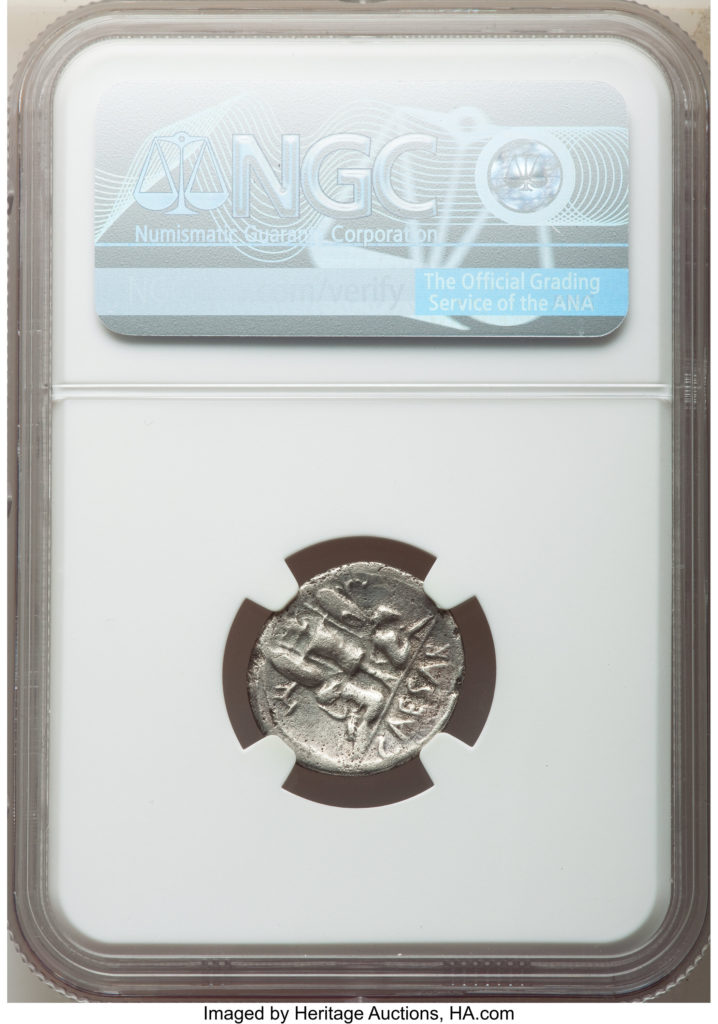Big collections of ancient coins are generally sold through trusted channels. Heritage Auctions brought to market the Werner Collection of Ancient Roman and Byzantine Coins. More than 300 coins and 1600 years of history spanned the collection. Bidding ended on February 20, 2022 and it’s time to look at how these have performed against expectations.
Collectors Dashboard has reviewed sales of ancient coins before and it’s important to understand that the high-end coins from this category were generally unique in condition. In sports collecting terms some of these examples that sold were a true one-of-one collectible.
What is amazing, despite how rare some of these coins are, is that they just don’t get the same sort of bidding interest as some of the more modern coins. Then again, how many are buried out there in former buildings or under lost roads and trails? And how many of these ancient coins are just waiting under old shipwrecks that are just waiting to be found?
Collectors Dashboard evaluates high-end collectibles as an alternative asset class. This means collectibles are attracting the same capital that could have been invested into stocks or bonds. Many collectibles now cost thousands of dollars (or much more). Collectors with a passion to own a collectible for years frequently have to compete directly against investors whose only desire is to make a profit in the future.
The first coin we featured in this was a clear cut example that shows CAESAR written out very clearly. Julius Caesar, as Dictator (49-44 BC) AR denarius (19mm, 3.66 gm, 11h) NGC VF 4/5 – 2/5, brushed had a bid of $1,550.00 after 24 bids on February 16 and sold for $2,520.00 on February 20 after 27 bids. We found four Heritage Auctions sales of the same Caesar coin type in 2021. All were graded by NGC VF and sold for prices between $1,200.00 and $2,040.00. This is not the most expensive coin in the auction by any means, but the recognition has helped this rank among the highest page views of lots in the auction.

It is hard to judge certain sales and auctions when there are no estimates issued by the auction house. This was an auction where no estimates were provided by Heritage Auctions. Some of these have seen similar sales in the past and they were referenced if applicable.
Here are some of the other coins Collectors Dashboard profiled in the auction:
Jotapian (ca. autumn AD 249) AR Antoninianus (22mm, 3.88 gm, 12h). NGC XF and the only example in XF condition graded by NGC. The bid was $4,000.00 after 13 bids on February 16 and the coin sold for $5,400.00 on February 20 after 15 bids.
Anthemius, Western Roman Empire (AD 467-472) AV solidus (21mm, 4.44 gm, 6h) NGC AU 3/5 – 3/5, light graffiti, bent, gold. The bid was $2,800.00 after 20 bids on February 16 and the coin sold for $3,480.00 on February 20 after 21 bids. Two NGC AU graded examples sold in 2019, one CH AU on September 9, 2019 for $6,720.00 and one AU on September 9, 2019 for $3,120.00.
Leo II and Zeno, Eastern Roman Empire (18 January-17 November AD 474) AV solidus (21mm, 4.45 gm, 6h). NGC Choice AU 4/5 – 4/5, die shift. The coin had a bid of $2,800.00 after 19 bids on February 16 and sold for $6,600.00 on February 20 after 34 bids. Ch AU condition for the coin has an NGC population of 3 and a different example from that population was sold by Heritage Auctions on August 20, 2021 for $15,000.00.
Nepotian (3-30 June AD 350) AE2 or BI centenionalis (24mm, 4.95 gm, 11h) NGC Choice VF 4/5 – 2/5, smoothing. The coin had a bid of $2,700.00 after 6 bids on February 16 and sold for $10,200.00 on February 20 after 16 bids. This was the high selling coin of the entire auction. Image by Heritage Auctions.

Jovinus, Western Roman Empire (AD 411-413) AR siliqua (14mm, 1.33 gm, 6h) NGC XF 2/5 – 2/5, scratches. The coin had a bid of $2,160.00 after 12 bids. Only 4 examples exist according to the NGC population.
Alexander of Carthage, Usurper (AD 308-310) BI reduced follis or nummus (23mm, 5.36 gm, 6h) NGC VF 3/5- 1/5, damage. The coin had a bid of $1,900.00 after 18 bids on February 16 and sold for $2,760.00 on February 20 after 13 bids.
Theodosius I, Eastern Roman Empire (AD 379-395) AV solidus (20mm, 4.44 gm, 6h) NGC MS 5/5 – 3/5. The coin had a bid of $1,750.00 after 18 bids on February 16 and sold for $2,400.00 on February 20 after 24 bids.
Valentinian III, Western Roman Empire (AD 425-455) AV solidus (21mm, 4.48 gm, 7h) NGC MS 5/5 – 4/5. The coin had a bid of $1,950.00 after 17 bids on February 16 and sold for $2,760.00 on February 20 after 20 bids.
Gordian I Africanus (March-April AD 238) AE sestertius (30mm, 22.20 gm, 12h) NGC VG 4/5 – 3/5. The coin had a bid of $1,450.00 after 15 bids on February 16 and sold for $3,120.00 on February 20 after 29 bids.
There was something for every level of coin collector in this auction. What seems disappointing on the surface was the 770 pageviews for the Caesar coin not translating to a higher auction price. Then again, it did sell for much more than in the past. Coins associated with tragedy and history have a broader appeal than those moments lost to time. Collectors Dashboard featured the sale of the Ides of March coin and owning any piece from that moment in time is becoming challenging each year.
Categories: Coins & Money


